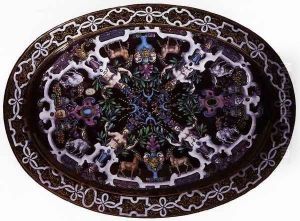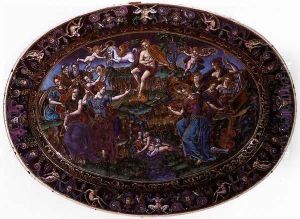Martial Courtois Paintings
Martial Courtois was a French engraver and printmaker who lived and worked during the late 16th and early 17th centuries. His exact birth and death dates are not well-documented, but it is generally accepted that he was born around 1592 and died around 1630. Courtois is sometimes referred to as Martial the Younger to distinguish him from his father, Martial Courtois the Elder, who was also an engraver.
Courtois' work is characterized by its fine detail and the influence of the Baroque style, which was predominant in European art at the time. He was known for his skill in engraving, which involves incising a design onto a hard surface by cutting grooves into it. This technique was commonly used for printing images and was a precursor to modern printmaking techniques.
Not much is known about Courtois' life, and the information that does exist is often based on the works he left behind. He is believed to have been active in Paris, where he would have been part of a community of artists and printmakers. In the absence of extensive written records, the study of his engravings provides insight into his artistic contributions.
Martial Courtois' works were primarily religious in nature, reflecting the strong influence of the Catholic Church on art during this period. His engravings often depicted scenes from the Bible, the lives of saints, and other religious iconography. These works not only served a devotional purpose but were also a means of disseminating religious imagery to a broader audience, at a time when not everyone could afford the luxury of painted artworks.
Despite the lack of detailed biographical information, Martial Courtois' engravings remain as a testament to his technical skill and artistic legacy. They continue to be studied by art historians and are held in various collections, offering a glimpse into the world of early modern European printmaking.

